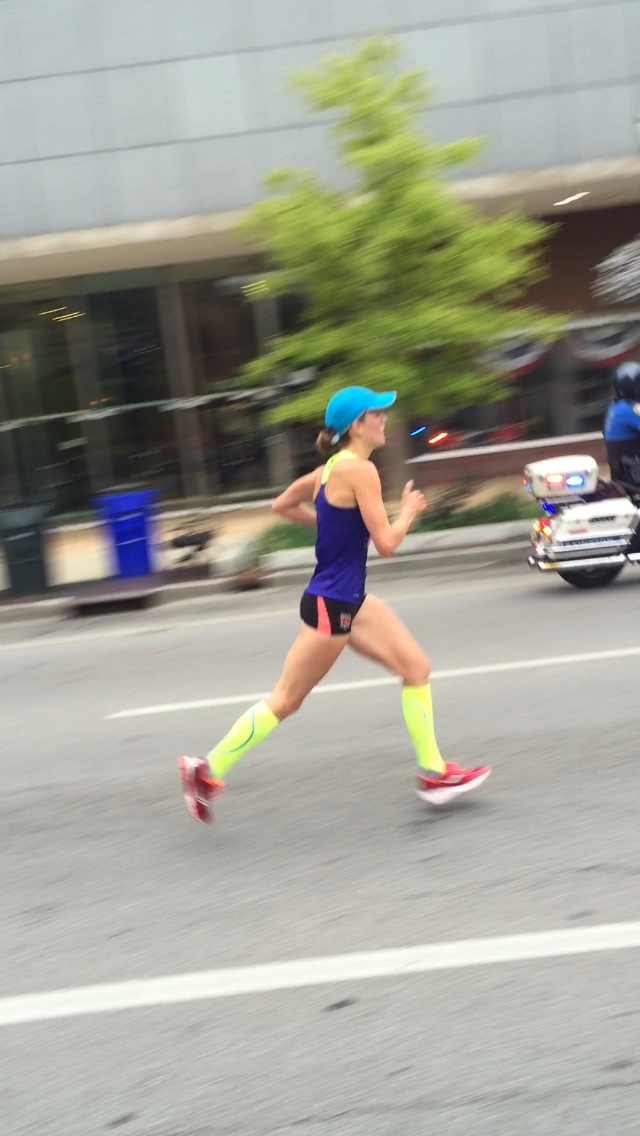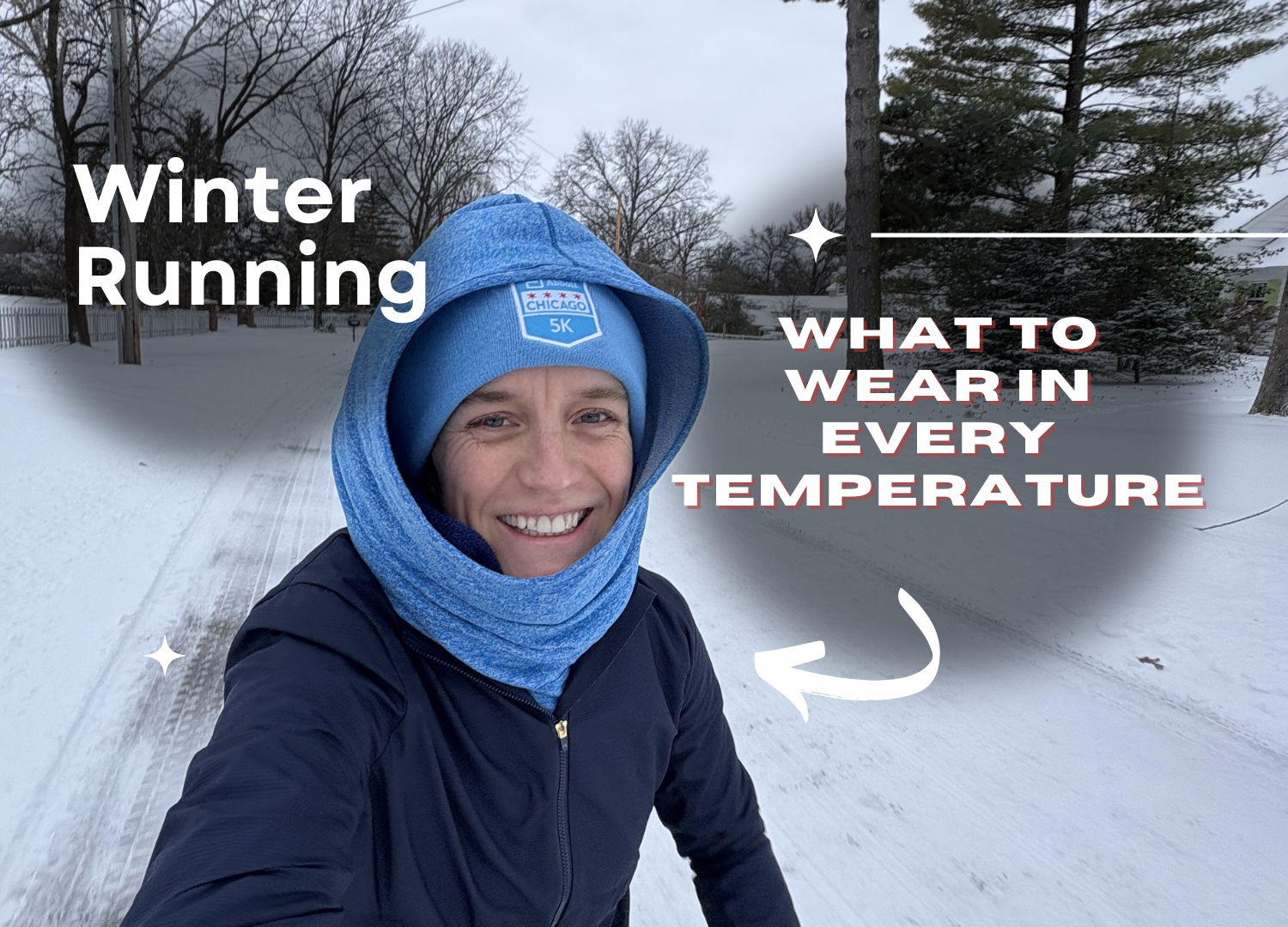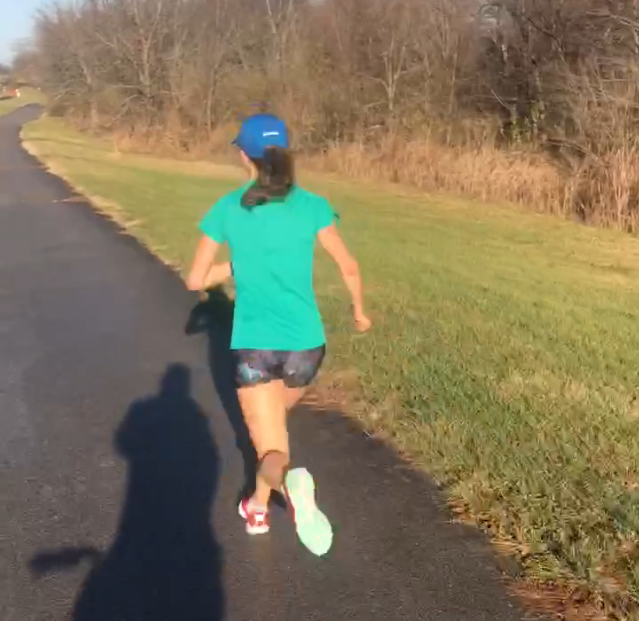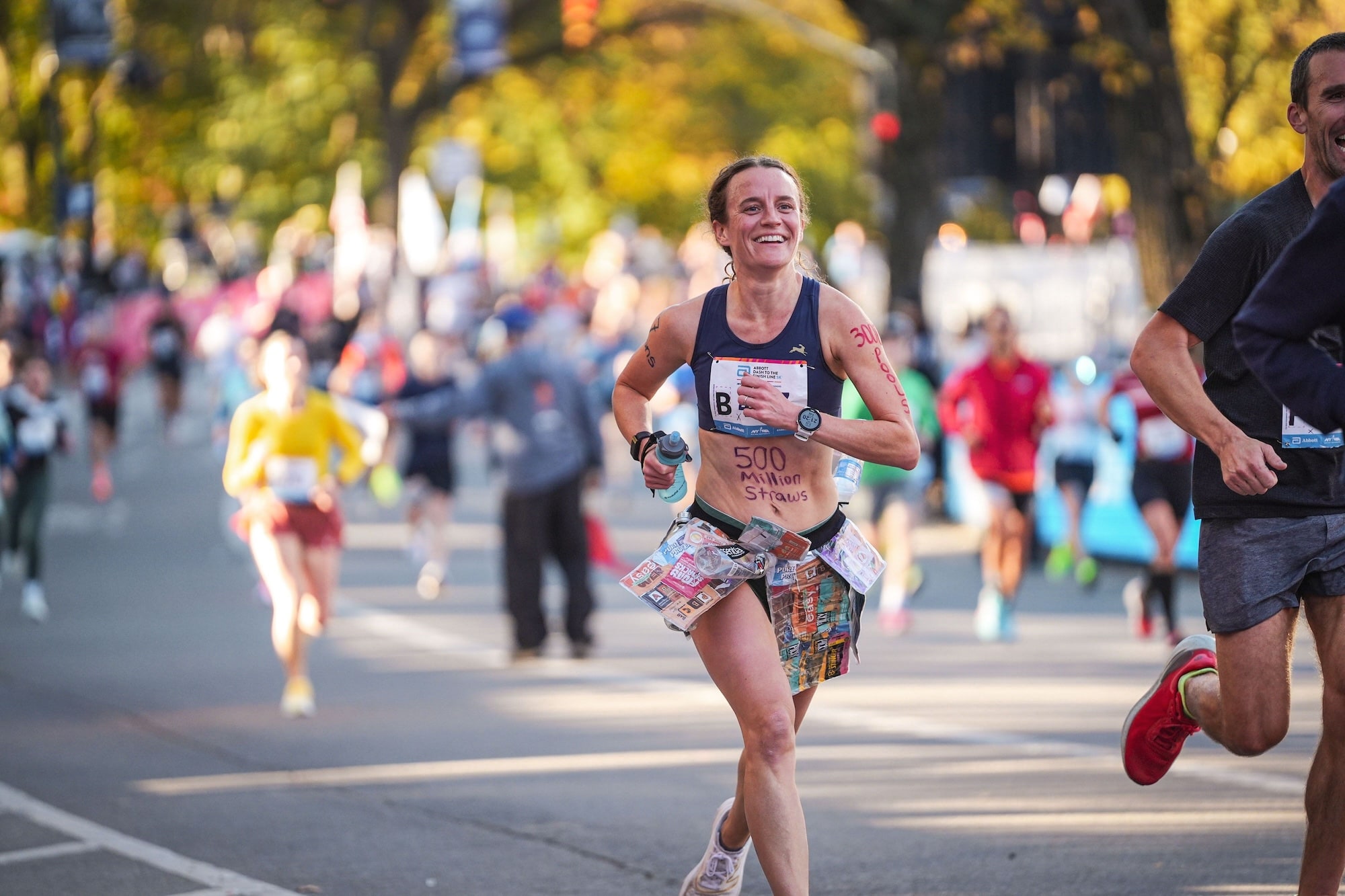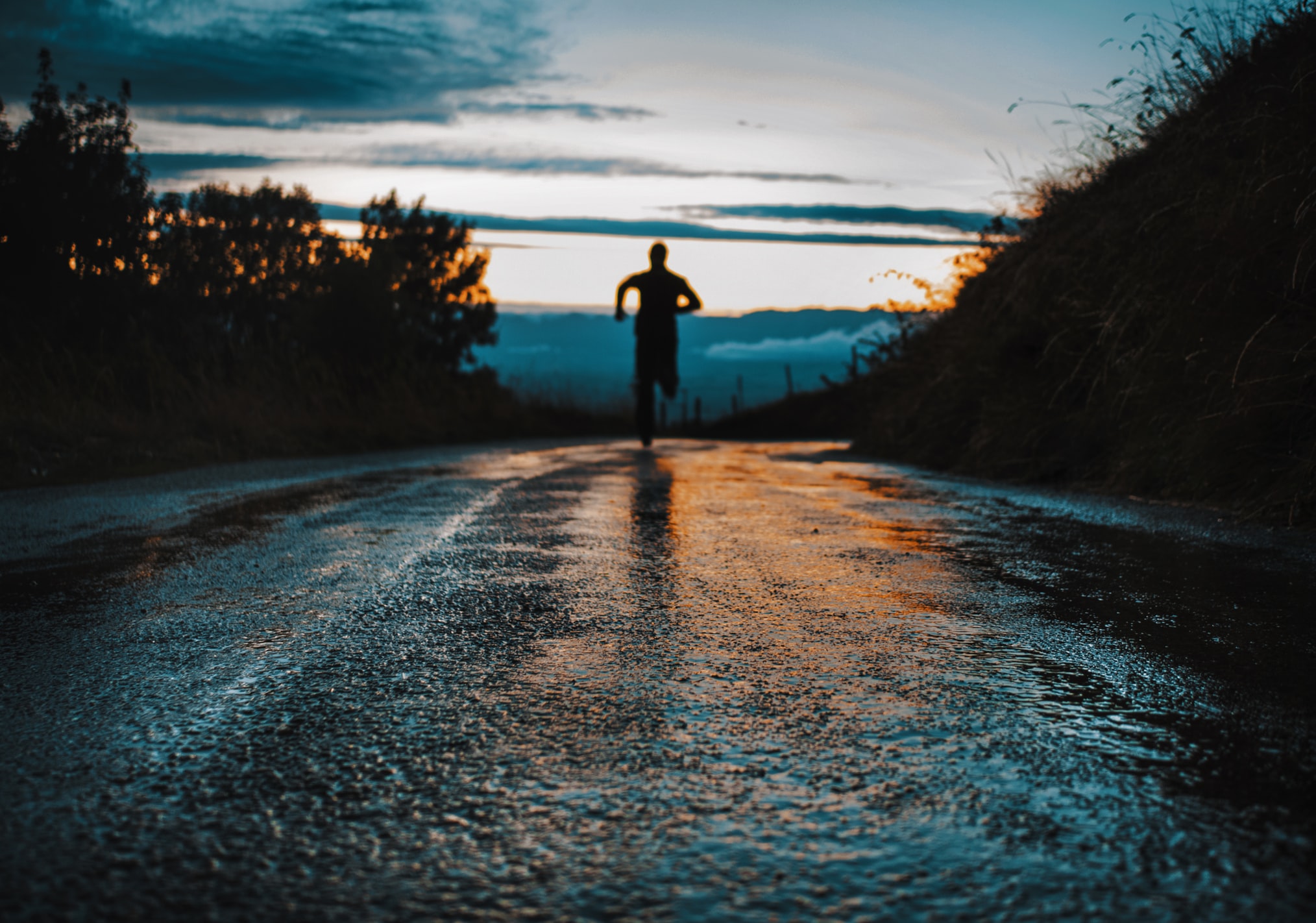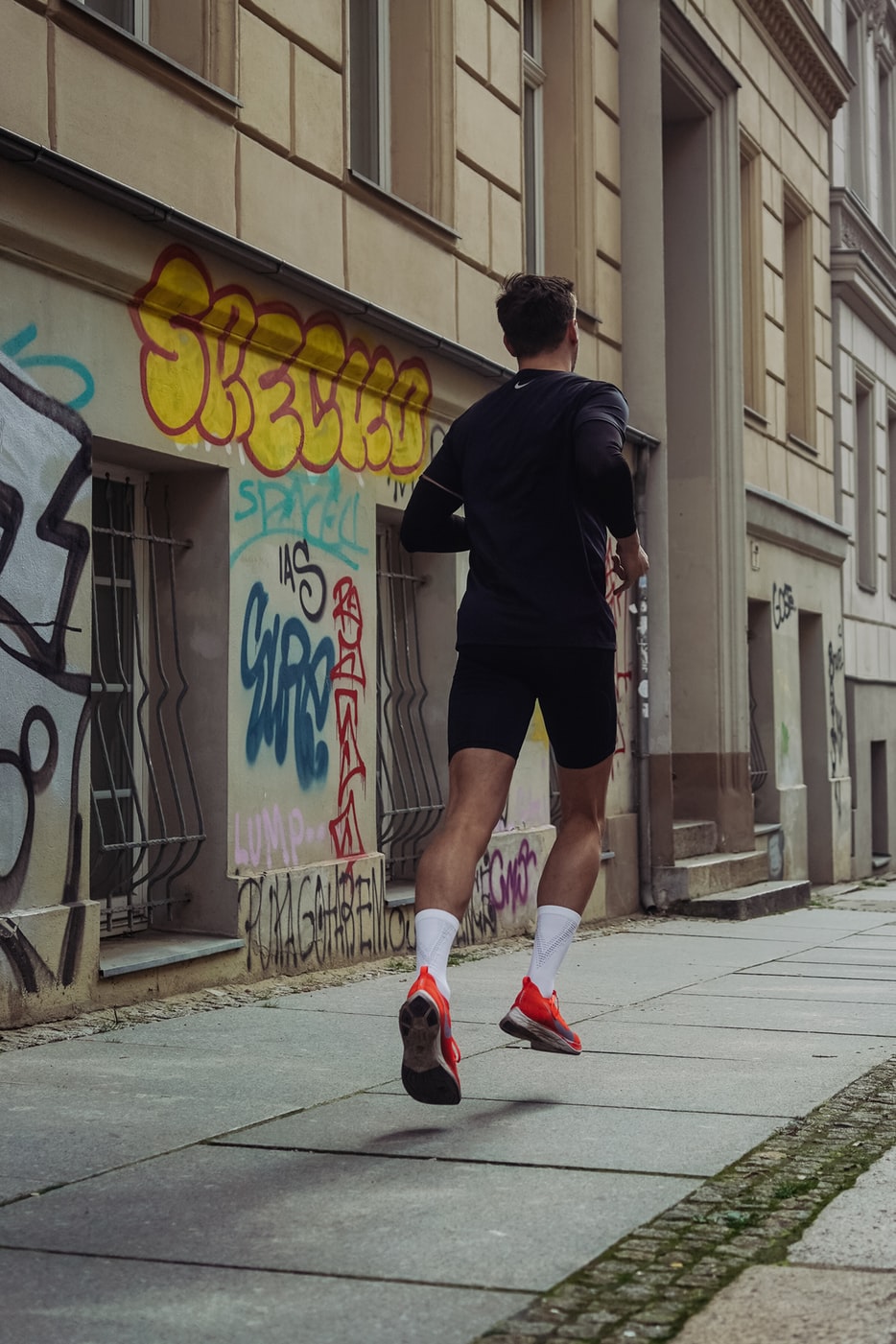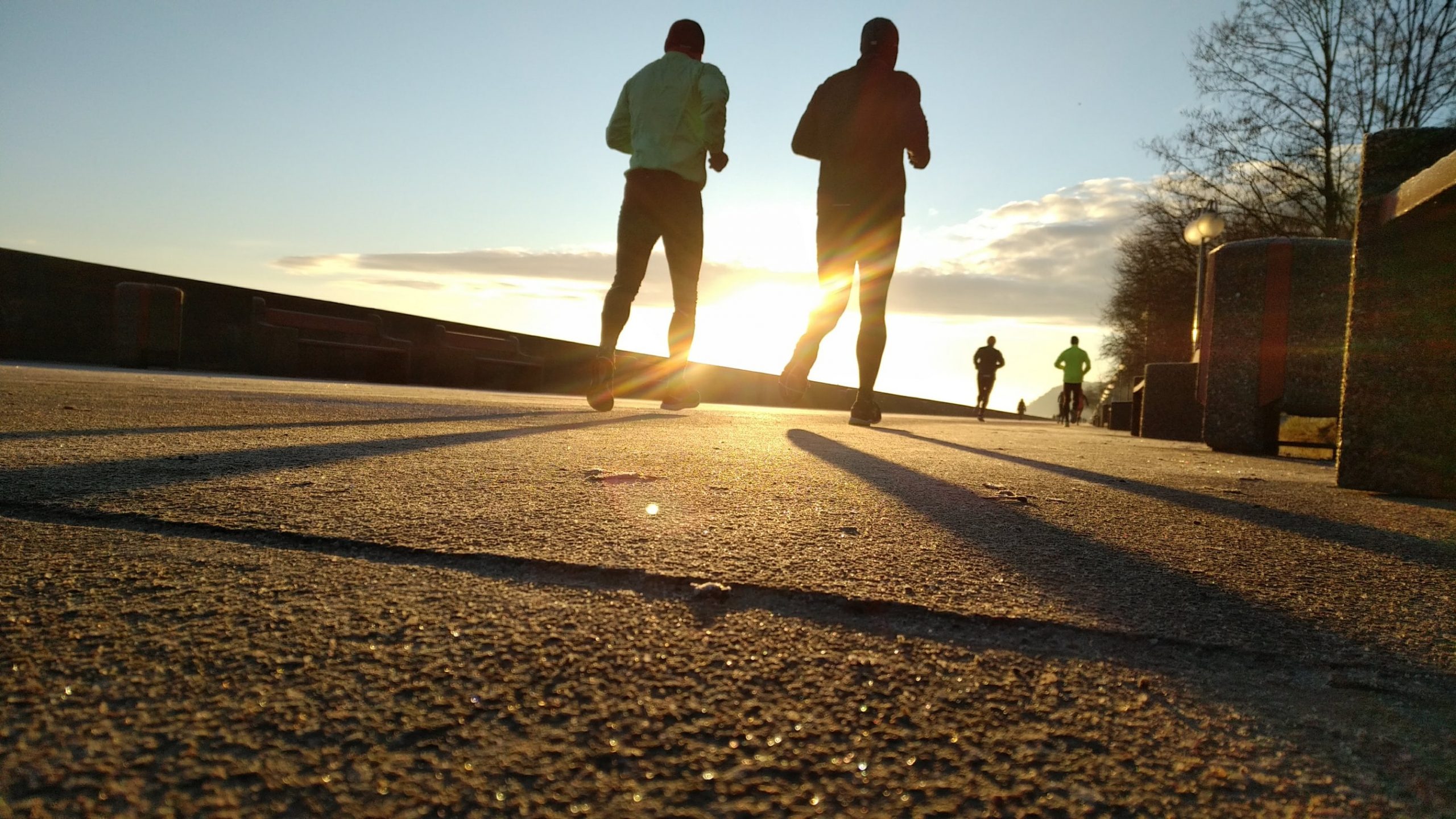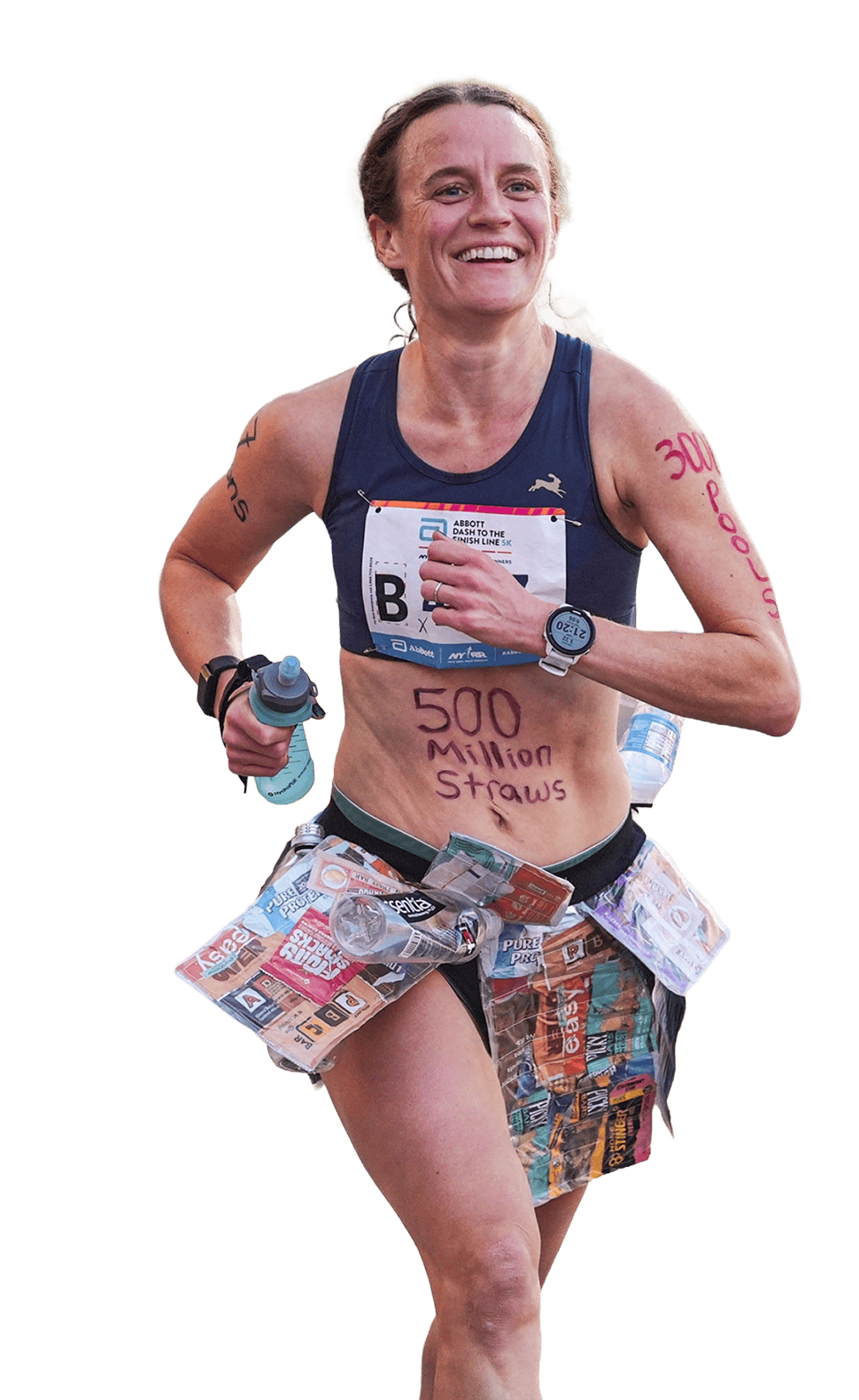You may have heard me throwing that phrase around, maybe you are a Running for Real Superstar on Facebook and see people talking about it in the community (if you aren’t a member yet, why not?! Come join us!) and you are completely confused.
You might be thinking:
I could NOT run without my watch! Not a chance!! Why would I do that when I have my lovely GPS watch to keep track?
My Garmin helps me to stay motivated, committed, see my journey, show its all worthwhile, and so much more. Why would I ever remove that?
First off, I am NOT asking for you to not wear your GPS watch, far from it. I LOVE my Garmin Forerunner 235 and when I run without it on my arm, I feel weird…and find myself looking at my bare wrist multiple times out of habit.
With #NoWatchMe you CAN wear your GPS watch.
What #NoWatchMe means not WATCHING it, having no clue of pace while you are running. I love the double meaning of this; you are not WATCHING it and you can also tweak it to say now-watch-me…because you will surprise yourself with just how much better and faster you run when you do not have your head down all the time.
So when I say not looking at it, what do I mean?
Not looking at it when you have run a mile/kilometer, not looking at the average pace in any way, and not having any idea of the speed you are going…until after.
This can (and should) be applied to workouts, races, AND easy runs, everything.
Now, I get that for many people I might be going completely against everything you have ever learned in your life, and for many, the reasons I gave above, are what keeps you going…or at least you think they are, so you are not prepared to let go of that motivation.
But:
I am not saying you can’t run 7.00 miles rather than 6.99, you can look at it for that reason, all I am saying is you have no clue of your pace.
For races, for workouts, for easy runs, all of them, you just do not need to know.
All you need to do is change the settings on your GPS watch for the following:
- Only distance and time are displayed on the watch
- It does NOT beep or vibrate at mile (or k) marks
- You CANNOT see your average pace anywhere
And that’s it.
Need more convincing?
Well, you can either watch this video, where I explain it OR read ahead, and I will give you all the detail you need of exactly how to do this.
Let’s break it down:
Have you ever had one of those runs, workouts, or races where you looked down at your GPS watch, saw it said you were running slower than your goal pace (or than you expected), and you thought, “oh my god I am running so slow, what the heck is wrong with me?” Not only do you pick up the speed, even though you are not feeling great, but now you are panicking that you are well behind “pace” and you have to make it up…all while not feeling very strong.
Maybe your body was just taking a little longer to warm up that day, maybe something wasnt quite right, but had you listened and trusted it by going at the speed it felt was right for that moment, it would have worked out the issue, and allowed you to not only pick up the speed gradually, but get into a rhythm that felt good, and from there, your confidence grows and you get faster and faster, far exceeding the version of you that was forced into a pace when it wasnt ready.
Here is another analogy:
You haven’t eaten in 6 hours and you are hungry, trying to complete a work project. Your belly is rumbling, and you feel low in energy, a little depressed maybe. If you listened to that cue from your body and ate a meal, you would feel happy again, those signals will go away, and now you can concentrate on your project, quickly finishing it and making up the time you lost getting food, so you can go home and enjoy the rest of your day with a sense of pride. If you recognized that you are hungry, ignored those sensations, and told yourself that you MUST get this done before you are allowed to eat, what happens? Your energy goes further and further down until you can’t barely read a sentence anymore, and your work rate plummets, it ends up taking you almost the whole day to finish, and you submit the project indifferent because you are so fed up and just don’t even care anymore. The next day you feel terrible about yourself, a complete failure.
Had you just listened to what your body was telling you, you would have been happier, more confident, and satisfied.
Let’s look at the other side:
You are in a workout or race where you looked down at your GPS watch and saw you were running MUCH faster than you are “supposed to”, you are running much faster than your “goal pace”. Immediately your heart sinks, you begin to panic…“It is only a matter of time before that catches me up, oh my god I am going to blow up”. Then you spend the next part of the race just waiting for that fast start to come back and get you. As soon as you go through a rough patch (which will happen in ANY race either mentally or physically), you admit defeat, and let yourself spiral mentally out of control, thinking that you are stupid, useless, and slow. You slow right down and spend the rest of the race in pity, completely defeated, until you cross the line, devastated. Whereas really, this was just one of those bad patches of a few minutes, and you would have come out the other side, feeling strong again, and rolling those final few miles down.
What if that day was one of those rare, dream race days where you just ran out of your mind? You know, one of those days you see others post about, where you exceeded all your expectations, cried happy tears at the finish, and just reaped the rewards of all the hard work you have put into it.
But instead, you let your GPS tell you were going too fast, and it messed with your mind.
Your body KNOWS what to do.
What if I don’t know what my pace feels like? Then I really WILL go out too fast and blow up.
Well, I have previously written a whole post on that, so I would say you should head over here to take a read of the 7 ways to make sure you do not slow down in a race.
I will just highlight a few factors in a race scenario, but before I do, one of the keys to this is to practice in your training. It can work if you just decide to go for it on race day, but it will require a lot more confidence to trust and let go, so the best way to do this is to use #nowatchme in your training first.
I have talked about running using the effort scale many times before, and if you don’t have that guide yet, GO GET IT. That will help you a lot.
Hard training using #nowatchme
This is the absolute best time to experiement, to teach yourself how to do this, to learn what racing pace feels like. If you are someone who doesn’t know what that feels like, training this way will help you get there.
When you have been given a pace to run at for your workouts, instead of looking all the time (as you have changed the settings on your watch so pace is not displayed!!), start to ask yourself, “does this feel like INSERT PACE?”.
Run your workouts at what feels like X pace, rather than trying to hit an exact split, which puts a heck of a lot of pressure on you.
Each repeat/tempo/workout, ask yourself if it feels like it is the right pace, no one is judging you, no one is going to scold you if you are wrong, just be realistic with yourself, does this feel right? Think about the way you FEEL, the speed you are moving across the ground, your breathing (is it too hard for this point in the workout?), how often your foot hits the ground. Pay attention to those factors.
If you finish and you were WAY off, then think back on those things you noted during, and think about how to rectify them during the next one, feel like you are moving slightly slower across the ground, that your breathing is a little easier, that your feet are hitting the ground a little less often than before.
This will take practice, not so much physically, as your body will appreciate this immediately, but before your mind allows you to accept that this is the best way to run.
Think about the elites for a moment, think about the legends of the past. I am telling you right now, most elites do NOT let a watch rule their workouts or races. Sure, they are running for a time, but they are also aware that their body knows best, just as yours does. Think about the runners of the past who led the way for us today, they didn’t have GPS watches telling them what to do, they just learned over time what a certain effort felt like, how to ration their energy correctly throughout the distance they had to cover.
If that helps you, thinking of rationing out your energy, that is another way to practice. If you have 5 x 1 mile repeats, in your second one, think to yourself, “am I about 2/5 of the way through my energy stores?”. If the answer is, no, I am probably over halfway through my energy, slow down a little. If you are thinking, actually, I feel like I should be a little more tired by now, you can speed up just a little.
Start by checking your pace after each repeat, thinking about it, and making the necessary changes as you learn what your body feels like at a certain speed. Over time, you should be able to transition to where you can look at the workout as a whole, and only look at your paces afterwards.
Now, when it comes to training this way, you will find yourself tempted to check a lot at first, and that is okay, but the more you practice, the more you will find those thoughts are easier to ignore because you are enjoying your running SO MUCH MORE without the pressure on you all the time to hit a pace. It is incredibly freeing and empowering, and once you switch to this method, you will probably never go back.
Racing using #NoWatchMe
As for the whole point of this post, I mentioned not looking at your watch, your pacing, BUT if you are extremely nervous about not going out too fast and do not feel confident enough without it, especially on race day, as I mentioned in this post, you CAN check your watch a few times, early in the race, and preferably at mostly random distances (as opposed to say a 5k or 10k split, numbers you may know well).
When I say random distances, here are some examples:
800m of a 5k
1 mile, 4 mile of a half marathon (2k, 7k)
1 mile, 4 mile, 7 mile of a marathon (2k, 6k, 11k)
The first check in is okay to be aware of the pace, that is literally the one to keep you under control if you are someone who does get sucked out by the adrenaline. That marker will be where you have not really done too much damage (as long as you are not stupid about it) and you can fix if you are off.
Do not just have one number, one exact pace, as that is FAR too much pressure, and will leave you feeling negative if you are even slightly off…the perfectionists in us want to be RIGHT on. Within that range, have about 10 seconds either side of a mile that is okay (5 seconds of an 800m), and in which case, you will just continue right as you are.
Now, the temptation if you are more than 10 seconds off, is to want to recheck again, to make sure you have slowed down/speeded up enough, but DO NOT. Resist that urge. Instead, say to yourself, does this feel like a pace I can maintain for x miles (however many you have left), does this pace feel like what INSERT GOAL FINISH PACE feels like? If the answer to both is yes (be honest with yourself), just keep going, you are doing the right thing. If the answer is no, slow down a little more. Even if that means you slow down too much, you will give your body a chance to recover, and therefore you will feel better within a few minutes, and be able to naturally pick the pace back up.
Somewhere within each mile for the rest of the time till the next marker I mentioned above you are going to ask yourself, “does this feel like a pace I can maintain for another INSERT REMAINING MILES LEFT? Does this feel like a mile INSERT MILE NUMBER pace?” Key word here being FEEL. Not exact, there is no-one else in this decision but you, to YOU does this feel like the right pace?
If the answer is yes, keep going. You will find that your body naturally falls into a rhythm, and if you truly trust this, and you do it right, you will be AMAZED at how consistent those paces end up being when you look at them later that day.
For the next markers (4 mile for half and full, 7 for a full), have a range of about 45-75 seconds either side of the time your fitness indicated you are ready for (I would say half marathoners and sub 3:30 marathons should do 45 seconds, over 3:15 marathoners between 50-75 seconds).
BUT keep in mind your course. If you are on a downhill course for the first part of the race, you may be a little faster, same with uphill courses, weather conditions, how crowded your start was. There are many factors that can put you a little slower than expected. If this is the case, give yourself a little more buffer either way.
It is important to note:
I am talking about the time you have been racing, OVERALL time, again, pace does NOT come into this.
For example, if you had followed my advice to find what your race goal should be, and you had found your training indicated your A goal was a 3:15 marathon, which equates to just under 7:30 a mile, rather than obsess about the 1 extra second, we will round that up to 7:30 pace, and assume if you are trusting your body, you will make those extra few seconds up in the final miles.
Therefore, at the 1 mile mark, you can just check your watch (displaying ONLY time and distance), and it says you ran a 7:14 mile (16 seconds too fast).
Okay, a little quick, back down just a little, INSERT YOUR NAME HERE. Relaxxxxxxxx.
Then you reach the 4 mile mark, it says 30:56. According to my suggestions, your range was 29:15-30:45.
Okay, a little slow this time, no need to panic, there was a little uphill in there (or whatever else you can reassure yourself with), I am going to pick it up just the tiniest bit.
By the 7 mile marker, your range is 51:45-53:15, this time you run 52:07.
Perfect. Right in the middle. Time to trust my body and run this race the best I can.
If you are still a little off at that marker, remind yourself that trying to run a particular pace is obviously not helping you today, time to let your body takeover, and see what it is ready for.
At that moment promise yourself that you will not check again for the rest of the race and you will let your body tell you what it is ready for.
Once again, at that moment, in either scenario, switch your mind over to asking yourself once a mile, “Is this the best I can do for mile INSERT MILE? Does this feel right? Does this feel like a speed I can hold for another INSERT REMAINING MILES?”.
It might be stressful at first, as the temptation to check will be strong, BUT you will soon notice it is incredibly liberating that you are no longer freaking out about running a pace, and instead focusing on doing the best YOU can do. You will be able to look around you, take things in more, and appreciate the fact that you, my friend, are out there doing this, right now.
You are doing the best you can do, and you know that all you need to do is make sure you cross the finish line knowing you gave your absolute best, that is all you can control, the result will take care of itself, and you will run the time you deserve, as your mind can now be focused on trying your best, instead of the pressure of hitting a pace.
You may still be skeptical, but once again, if you are in the Running for Real Superstars group, go watch this video, look at all the skeptics who trusted me and gave it a try, look at the magic that happened for them, and it will happen for you, but you have to take a leap of faith and trust me.
It does work.
If you need more reassurance, be sure to download the effort scale guide to try to understand what running by effort truly means if you still feel you have no clue, and remember, go back to the post about how to not slow down in a race. That will work wonders.
#NoWatchMe for Easy Runs
This one is possibly the most critical, if you absolutely just have no interest whatsoever in trusting me with this concept, even though there have been hundreds who have tried it and succeeded with it, running times they never dreamed they could.
If you use #nowatchme for one thing, PLEASE let it be your easy runs.
These are the ones that can make all the difference, really.
Once again, changing the settings I mentioned at the beginning of the post, removing the beeps (or having enough restraint not to look), and changing the display screen to ONLY show distance and time.
You should run every single run that is NOT a workout or race using nowatchme. Your easy runs show absolutely NOTHING about your fitness, in fact, they are probably pushing you deeper into a hole, meaning you will NEVER run as fast as you could, because you are letting your ego tell you that you are too slow.
Did you know, Eliud Kipchoge and the other Kenyan runners do their easy runs at 9-10 minutes per mile! This is 4:35 per mile for 26 miles, and they are running MORE THAN DOUBLE that for easy days.
I have preached about easy days multiple times, you can find those posts here:
Run Easy- What Does That Mean Anyway?
5 Reasons Why Running Easy is So Hard
3 Ways to Make Sure You Actually Run Easy on Recovery Days
BUT, let me just remind you once again that your easy pace does not show ANYTHING.
Saying that you can now run faster on your easy days than you could last year does not show ANYTHING. In fact, most experienced runners will laugh at statements like that because they know that runners who say that just dont get it, do not understand how much better they could be by not running a pace for a recovery day, but running a speed that actually allowed their body to recover, whatever it takes.
Take your ego out of the equation, let the workouts and races show your fitness, and remove ANY pace restrictions you set on yourself for easy days. Yes, you may end up running 1 minute slower than usual, but if you run at what feels like an easy pace, where you can breathe through your nose the ENTIRE TIME (yes, even uphill), then you are doing what your body needs to recover, and so it will.
The biggest mistake most runners make is to end up in a grey zone, where they are running slightly slower and slightly faster on easy and hard days. Instead, you want MORE variation. The slower you run on easy days, the faster ou will run when it matters.
You will also find you enjoy the runs so much more, because you can appreciate being out there, your mind can get a rest as it is not trying to push all the time to stay at the pace you deem acceptable.
The best part about this is, it doesn’t matter what terrain you run on, what the weather is like, what the footing is like. You can just go out there and run. It removes so much of the stress and confusion about running.
That is why Steve and I came up with our training plan, 100% by effort and explains exactly how to do this. It has been very successful (take a read of the reviews if you don’t believe me), and this plan you can use for the rest of your life, for every race you ever do if you choose. It is also wonderful to see the amount of negative splitting that happens here.
Runners using our plan or the #nowatchme method often CRUSH those final few miles, gaining confidence with every second as they are passing people one after the next, and running faster in those final few miles than they ever dreamed possible.
It works, and you will find more joy in your running than you have since you first started running and got that runners high for the first time.
So my friends, give it a try, in whatever capacity you can. If you have to start with just easy runs, do that, and then maybe try a few workouts, and see. You will be amazed, and I have not met a SINGLE PERSON who has bought into this and then gone back to running by pace. It really will change your running life forever.
Will you join me in the #nowatchme revolution? Lets make running your best enjoyable again.

